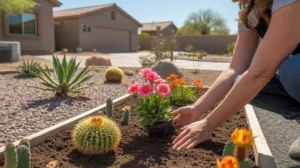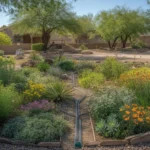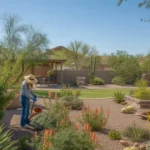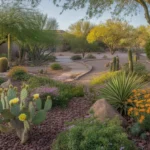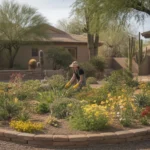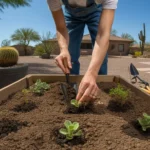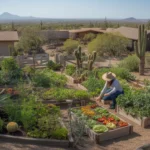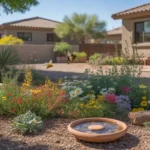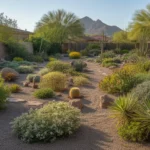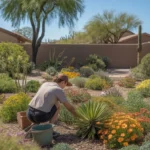As the warmth of spring breathes new life into the Southeast Valley, it’s the perfect time for a gardening renaissance in your own backyard. From Queen Creek to Gilbert and Mesa, the unique challenges and opportunities of desert gardening are ripe for exploration. With some expert tips and a little creativity, you can transform your space into a thriving oasis that’s both beautiful and resilient.
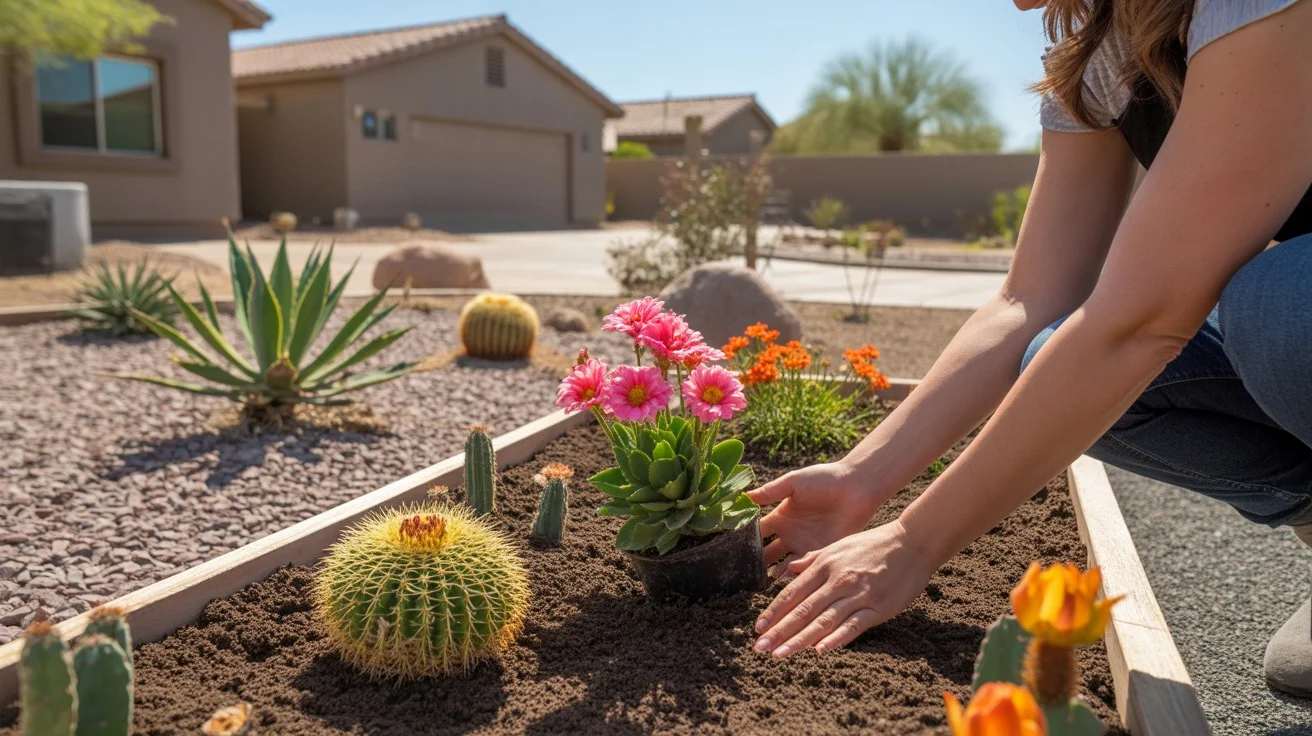
Preparing Your Garden for Spring Success
🌱 Before diving into planting, take time to prepare your garden for the season ahead. Clear out any dead leaves, prune back overgrown perennials, and refresh your soil with nutrient-rich compost. In the Southeast Valley’s alkaline soil, adding organic matter is key to improving drainage and fertility.
🧰 Spring is also a great time to check your irrigation system for leaks or clogs, and to adjust your watering schedule as temperatures rise. Deep, infrequent watering encourages stronger root growth and helps plants withstand the heat. Consider installing a drip system or using ollas to target water directly to plant roots.
🌞 As you plan your spring garden, keep in mind the intense sunlight and heat that characterize Southeast Valley summers. Choose planting locations that balance sun and shade, using larger plants or structures to provide afternoon respite for more delicate flowers and veggies.
Choosing the Right Plants for Your Microclimate
🌵 In the desert landscapes of the Southeast Valley, not all plants are created equal. Opt for native and desert-adapted species that can handle the extremes of heat, sun, and drought. Succulents like agave, yucca, and desert spoon are stars of low-water landscaping, as detailed in the article “Caring for Succulents in Gilbert’s Heat”.
🌺 For pops of color, consider heat-loving perennials like desert marigold, angelita daisy, and penstemon. Spring-planted wildflower seeds can also yield vibrant blooms, but be sure to choose mixes specifically suited to the Sonoran Desert climate.
🍅 Edible gardens can thrive in spring with the right plant choices and microclimate control. Herbs like rosemary, thyme, and oregano love the heat, while tomatoes, peppers, and eggplant can produce abundantly with proper shade and support. Consult planting calendars specific to the Southeast Valley to time your garden just right.
Designing for Beauty and Function
🎨 As you plant, think beyond individual specimens and consider the overall design of your space. Group plants with similar water and sun needs together, and create visual interest with varied heights, textures, and colors. Embrace the unique beauty of desert plants, from the sculptural forms of cacti to the delicate blooms of palo verde.
🪴 Incorporate hardscaping elements like gravel, stone, or recycled materials to define paths and gathering spaces while minimizing water use. Accent your plantings with desert-friendly decor like rusted metal, colorful tiles, or clay pots for an authentic Southwest flair.
🦋 Don’t forget to invite wildlife into your garden sanctuary. Choose native plants that provide food and shelter for birds, bees, and butterflies. The desert willow, for example, attracts hummingbirds with its showy pink blooms, while milkweed is a favorite of Monarch caterpillars.
Maintaining Your Spring Oasis
🌿 As your spring garden bursts into life, regular maintenance will keep it looking its best. Monitor plants for signs of stress, adjusting water and shade as needed. Prune back spent blooms to encourage continued flowering, and keep an eye out for any pests or disease.
🧴 In the dry desert air, many plants benefit from occasional misting to boost humidity and deter pests. You can also use natural pest control methods like neem oil or insecticidal soaps to keep unwanted critters at bay without harsh chemicals.
🌾 As temperatures soar into summer, add a layer of organic mulch around plants to conserve moisture and regulate soil temperature. Grass clippings, shredded leaves, or straw can all make excellent mulches while enriching the soil as they break down.
With these tips and a spirit of desert ingenuity, your Southeast Valley garden can become a spring oasis to rival any far-flung destination. By working with the unique rhythms and challenges of the desert, you’ll cultivate a space that’s resilient, sustainable, and deeply rewarding. So roll up your sleeves, dig in, and watch your corner of the desert bloom and thrive this spring gardening season.

